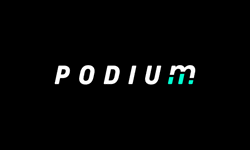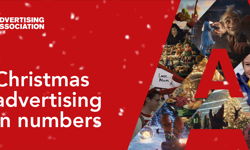It's fun to reminisce about a simpler time in publishing. Remember that? When all you had to do was amass a large audience, charge a little or nothing at all to your readers, and watch the money roll in from advertising. The main channels were print, radio, television and outdoor media. It seemed to be a can't-lose business model. That was fun. Can we go back to that?
While certainly more complex than I've cheekily suggested, I would argue that the core things you needed to win and renew advertising business was a (deceptively) simple list: good content, valuable audience, knowledgeable sales people, efficient production and distribution. While those things are still core to any publisher, operating in the digital space has introduced new opportunities and challenges for publishers and their clients, requiring a more collaborative approach to advertising. For this article, I’ll use collaborative advertising as shorthand for marketing activity across any platform(s) where advertisers, agencies and publishers are working together - collaborating - to create new advertising solutions.
Good content is still important. A valuable audience is only as good as the measurement, insights and (first- and third-party) data you have to back it up. Knowledgeable sales people not only need to know their titles, they need to understand the complex media landscape their clients are operating within and their biggest marketing pain points. Sales people must also be familiar with industry best practices and technology trends, not to mention keep up with the ever-changing product they are selling across a myriad of platforms. We now need integrated marketing, strategists and product managers to support them. We need analytics and insights around our audience, campaigns and products. We need project managers and creative technologists to fill gaps for clients and agencies trying to operate in a shifting landscape. And we need continually more sophisticated targeting, buying efficiencies to manage that targeting, as well as inventory and campaign optimisation for digital campaigns. If that were not enough, we also need to always be looking forward, understanding where our editorial teams and our audience are headed in terms of content, community and consumption patterns. It's enough to make the collective head of a large, well-structured team spin. What's a small (or even medium-sized) business to focus on with so many new demands? I would argue one solution is a collaborative approach to advertising.
The good news is that we're all kind of in this together. What do I mean? Readers benefit when good content is available in the channels they want to consume it in. Advertising is more effective when it reaches the right audience in the right environment, so marketers benefit, and of course publishers win when readers and advertisers are happy. Less and less can you achieve those things with a traditional buying and fulfilment approach which does not leverage the collective wisdom of marketers, agencies and publishers.
Though there are many possibilities in creating a collaborative advertising approach, here are a few ideas you can use to focus a small, busy team:
1. Focus on core values and what you can uniquely offer
There are constant demands to extend and improve what we offer advertising clients. We realised while there were lots of really interesting things happening in the advertising space, the things that would win (and renew) us business and result in happy clients, was focusing on small innovations and services which play to our strengths. We'll never be Google. Or Facebook. Or the Daily Mail. So for us, that means focusing on the things we're good at - like convening an audience for intelligent discussion and debate. It's something we've been doing editorially for 170 years. It's a part of our brand. That works great for brands interested in being part of a conversation. For many brands, though, being associated with discussion or a debate does not really make sense. When we get briefs, we take a little time and (a) make sure we understand the problem they're trying to solve, and (b) consider what we have which will help them tackle it. It doesn't mean we do not introduce new capabilities or services, it is just the filter by which we decide when and which things to chase and offer. For B2B publishers, the unique offering might be around the industry expertise you have or the mindset of your audience while they engage. For consumer titles, it might be the scale or aspirational nature of your environment. The collaborative bit is working with our clients to identify the best combination of what we have (or could build) to solve their marketing challenges, which would also be valuable to our audience.
2. Zero in on the best opportunities for trying new things
One of the things I find most challenging in introducing new products, services and capabilities is how to take something never been done before (or not done by us before) to market. There is little in the way of performance benchmarking for new executions (or services), and though we hope alignment with our titles will mean success with readers and clients, it is not always clear how something new will resonate with the audience. And of course, while many want to be part of something new, few can afford to take many risks with their marketing spends in a climate of procurement departments and focus on cost efficiencies. In this respect, we learn a bit from the agile development approach: figure out what is most important and prioritise accordingly, developing and launching things iteratively to learn what is working as quickly as possible. This keeps the spending (client money as well as everyone’s time) focused on results.
Speaking of results, that leads me to my third point on collaborative advertising:
3. Discuss success from the beginning (and then continue to discuss)
This seems like a no-brainer, but it is incredibly important to avoid disappointment and never just happens in one conversation during the sales process. There are many stakeholders with a myriad of motivations not to mention understandings of what the advertising solution will look like. Typically a collaborative advertising programme will develop as it goes (as I mentioned earlier, iteratively). How in the world will you be successful if not everyone agrees on what success looks like and things change along the way? The reality is that there will be some things that do not change - the overall marketing objectives, the target audience - but several pieces of that execution will most certainly change along the way. Discussing goals, coordinating with agency teams, and dedicating effort to measurement, analysis and insights are critical to keeping everyone focused on the same thing and confident that the money is well spent. In my experience, those open conversations have been not only critical to client happiness, they have been excellent learning opportunities for all involved, as all the parties - clients, agencies, and publisher teams — are the folks who are actually shaping the evolution of advertising. Oftentimes, we’re able to share what has worked (and not worked) based on our experience across campaigns with clients in different sectors. Agencies can share how they compare and rate publishers, introducing new metrics to help that along. Learning and evolving how we create collaborative advertising programmes is crucial for all involved, and leads me to my final point.
4. Use learnings to improve, extend, and educate
The best possible outcome is a campaign where marketing goals are met (or exceeded) and we can take what we learned during the campaign, identify what worked (and what did not) to improve and extend what we offer, as well as educate clients about what is successful with our audience. We’ve started to work harder at this in the last few years, actually starting with the launch of our digital editions at the end of 2010. In that case, we were trying to sell a proposition that looked and acted differently from other newspaper apps, and while it was digital, did not act like the web either. We created the Lean Back blog to share information about our thinking and get feedback from the market. Since then, we realised that it didn’t matter how much we were learning across all of our clients if we could not then feed that back into the community of marketers, buyers and publishers. As a result, we’ve launched tools agencies can use like our consolidated media report and creative showcase, Ads.Economist.com and re-launched the Lean Back blog as a resource and community touchpoint for CMOs. The goal is to extend beyond traditional advertising and ensure the capabilities and services we offer help evolve media and publishing.
While there are many more possibilities in terms of collaborative advertising, I hope the four takeaways - focus on your core values, identify best new opportunities, discuss success from the beginning and leverage and share learnings - will provide some food for thought. I would love to hear what other ideas you have and how collaborative advertising is working for your organisation.












